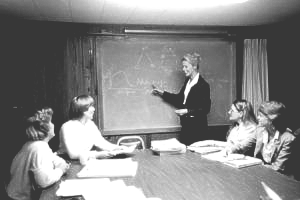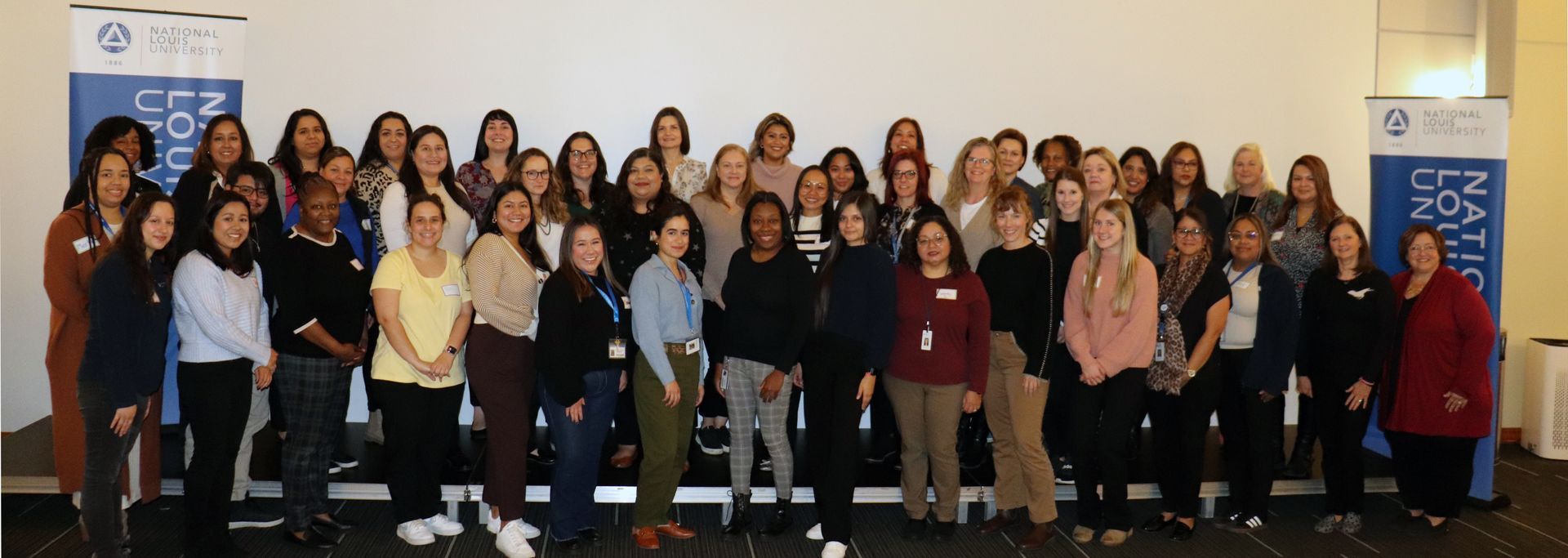BY Cara Murdoch, Sherry Rocha, Marie Masterson | March 8, 2022
This document may be printed, photocopied, and disseminated freely with attribution. All content is the property of the McCormick Center for Early Childhood Leadership.
The extended pandemic has been stressful for everyone, but particularly for families with children. U.S. News and World Report notes that physical abuse tripled among school-aged children when stay-at-home orders were in effect. During times of duress, families who typically can manage life challenges, may be triggered to engage in increasingly reactive relationship behaviors. Challenges to families related to COVID-19 include health issues, physical isolation, financial difficulties, interruption to routines, and lack of access to high-quality, consistent child care. These detrimental stressors may disproportionately impact under-resourced communities and families who experience health inequities, lack of access to high-quality healthcare, greater financial risks, and disrupted social supports. As early childhood education leaders, there is a unique opportunity to provide safeguards against abuse, especially during the most challenging times.
There are four recognized types of child abuse, including neglect, emotional abuse, physical abuse, and sexual abuse. As noted by the Safe & Sound organization, neglect includes failure to provide for a child’s basic needs, including physical, educational, or emotional. Physical abuse includes injury as a result of hitting, kicking, shaking, burning, or otherwise harming a child. Sexual abuse includes indecent exposure, fondling, rape, or commercial exploitation through prostitution or the production of pornographic material. Finally, emotional abuse includes any pattern of behavior that impairs a child’s emotional development or sense of self-worth, including constant criticism, threats, and rejection.
Often, signs of abuse are visible when physical abuse or neglect occurs. However, emotional abuse may be harder to detect or may be disguised as misbehavior in children. During isolation, children engage in greater use of screen time, have reduced physical activity, and demonstrate increased rates of challenging behaviors. In turn, children’s isolation and intensified behavior issues contribute to family stress and reduce children’s opportunities to develop positive, supportive relationships with people outside of the home. Teachers may notice and respond to behavior issues but may not appropriately recognize and address the underlying issues of stress, trauma, or abuse.
Expanding the Vision and Approach
Because of the prolonged challenges families experience during the pandemic, it is important to broaden the context of abuse and consider a range of related issues, including exposure to daily trauma and toxic stress. Recently, attention has been given to the impacts of discrimination, violence, and other adverse experiences that impact children’s early life experiences and may heighten the lasting effects of trauma. During the past two years, violence has risen and impacted neighborhood safety and families’ wellbeing. Child Trends notes that during children’s early years, they are more susceptible to the negative impacts of trauma, since early toxic stress impacts their relationships with others and social-emotional, cognitive, and physical development.
When children have the support of resilient families, they more easily rebound; however, when children experience prolonged toxic stress and do not have adults able to provide emotional support and help them thrive, negative impacts may be lasting. Early childhood program leaders and staff can play an important role as first responders to address these challenges and support the resilience of children and families.
Strategies for Early Childhood Programs
To prevent child trauma and abuse, programs can serve as important safe havens for families who may be in the danger zone – meaning they are currently experiencing extreme, prolonged, or toxic stress and need intervention to prevent escalation. When issues require professional support, staff can offer a range of information and contact numbers for confidential counseling and connections to social service agencies. Of course, when signs of abuse are present, staff must act as mandated reporters and contact their state or local child abuse hotline immediately.
When staff notice families are stressed, they can offer practical support early on when signs are first present. Programs can focus on developing positive relationships and providing a safe forum to address issues. The following strategies are a good place to start:
- Highlight National Child Abuse Prevention Month by sharing the 2021/2022 Resource Guide to increase awareness and commitment to advocacy for children and families.
- Gather a group of dedicated staff, family members, and community partners to form a task force. Invite others who want to be advocates to join with you to assist in setting goals and creating connections between the program and community partners and resources.
- Use the guiding principles to a trauma-informed approach when communicating with families and incorporate these in classroom teaching strategies. Learn more about the impact of trauma, how to create safe and validating experiences for children and families, and strategies to help children communicate their feelings and solve problems.
- Incorporate social-emotional (SEL) curriculum to support the development of empathy and social-emotional skills. Behavior dysregulation may be present in young children who are experiencing trauma. SEL curriculum can help them learn to cope with challenges and experience success in the classroom.
- Explore anti-bullying programs that teach bystanders not to remain silent and teach strategies to get help. Children often endure persistent stress or trauma when they are bullied or witness bullying. They may become bullies if left on their own to solve problems, if they do not receive ongoing adult assistance.
- Provide a range of family education materials, discussions, events, or support groups that offer social, psychological, and physical supports to families.
- Introduce family resources, including materials that address stress and trauma in infants and toddlers and offer support for crying and other stress-related behaviors. Help families prepare ahead of time to recognize signs of stress and plan consistent routines that can promote security.
- Identify community and mental health resources for families, including information about the impact of adverse childhood experiences (ACE) and the importance of trauma-informed care. Program staff and families may use these resources to help themselves and children cope with stress in healthy ways.
- Connect staff and families with tools and resources, such as a stress screening available from Mental Health America.
- Ask local experts to take part in family events to answer questions related to children’s mental health, nutrition, sleep issues, and stress management.
During these challenging times, early childhood leaders and staff can make a significant positive impact by promoting staff and family resilience. National Child Abuse Prevention Month is the perfect time to explore new resources, invite others to share ideas, and spotlight the mental health of children. Reach out to other early childhood programs in your area, call your local news station, connect with social service agencies, and let your community know you are working together to prevent child abuse and promote the wellbeing of children and families.
Cara Murdoch, B.A., is an assessor and training specialist and a member of the McCormick Center for Early Childhood Leadership Diversity, Equity, and Inclusion Task Force. Cara earned a baccalaureate degree in art and psychology and a lifetime teaching certificate for Art K-12 from Culver-Stockton College. Previously, Cara was a Quality Specialist. She spent 20 years in the Early Childhood Education field in classroom settings and as an assistant director. Cara initiated, advised, and was a consultant in the development of the year-round Essentials Preschool Curriculum for Gospel Publishing House.
Sherry Rocha, MS.Ed., is an assessor and training specialist at the McCormick Center for Early Childhood Leadership. She holds a master’s degree in curriculum and instruction with a specialization in multicultural education. Sherry has been dedicated to children and their welfare, safety, and emotional growth for over 30 years. She designed Nurturing Creativity in Children, a curriculum that won a national award from the National Extension Association of Family Consumer Sciences (NEAFCS), and was the recipient of additional awards for state and regional diversity work as the leader of the Education and Community committees of the Chicago Latino Coalition for Prevention. Sherry took the lead in creating the coalition’s video, Choosing Quality Childcare, in Spanish with subtitles in English.
Marie Masterson, Ph.D., is the director of quality assessment at the McCormick Center for Early Childhood Leadership. She holds a doctorate in early childhood education, is a licensed teacher, and is a national speaker and author of many books and articles that address research-based, practical skills for high-quality teaching, behavior guidance, quality improvement in early childhood programs, and leadership. She is a contributing author and editor of the book, Developmentally Appropriate Practice in Early Childhood Programs Serving Children Birth Through Age Eight, Fourth Edition.





